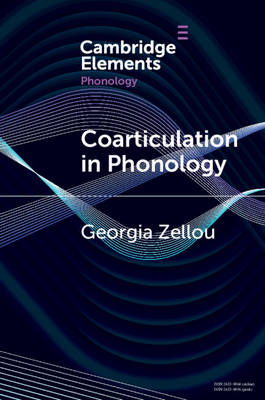
- Afhalen na 1 uur in een winkel met voorraad
- Gratis thuislevering in België vanaf € 30
- Ruim aanbod met 7 miljoen producten
- Afhalen na 1 uur in een winkel met voorraad
- Gratis thuislevering in België vanaf € 30
- Ruim aanbod met 7 miljoen producten
Zoeken
€ 33,45
+ 66 punten
Omschrijving
There is debate about how coarticulation is represented in speakers' mental grammar, as well as the role that coarticulation plays in explaining synchronic and diachronic sound patterns across languages. This Element takes an individual-differences approach in examining nasal coarticulation in production and perception in order to understand how coarticulation is used phonologically in American English. Experiment 1 examines coarticulatory variation across 60 speakers. The relationship between speaking rate and coarticulation is used to classify three types of coarticulation. Experiment 2 is a perception study relating the differences in realization of coarticulation across speakers to listeners' identification of lexical items. The author demonstrates that differences in speaker-specific patterns of coarticulation reflect differences in the phonologization of vowel nasalization. Results support predictions made by models that propose an active role by both speakers and listeners in using coarticulatory variation to express lexical contrasts and view coarticulation as represented in an individual's grammar.
Specificaties
Betrokkenen
- Auteur(s):
- Uitgeverij:
Inhoud
- Aantal bladzijden:
- 72
- Taal:
- Engels
- Reeks:
Eigenschappen
- Productcode (EAN):
- 9781009077330
- Verschijningsdatum:
- 4/08/2022
- Uitvoering:
- Paperback
- Formaat:
- Trade paperback (VS)
- Afmetingen:
- 152 mm x 229 mm
- Gewicht:
- 108 g

Alleen bij Standaard Boekhandel
+ 66 punten op je klantenkaart van Standaard Boekhandel
Beoordelingen
We publiceren alleen reviews die voldoen aan de voorwaarden voor reviews. Bekijk onze voorwaarden voor reviews.








